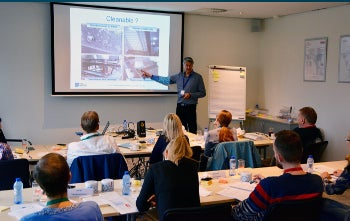External training takes the burden off bakeries

KANSAS CITY — The importance of training became no clearer than in 2020 as bakeries tried to adapt to new protocols and communication methods to address the coronavirus (COVID-19) pandemic. With advances in training methods, Cari Rasmussen, food safety specialist, Commercial Food Sanitation, explained how different external methods can optimize training effectiveness during her presentation at the American Society of Baking (ASB)’s virtual BakingTech 2021 conference, held Feb. 16-18. “Scheduling time, staff turnover, developing the curriculum and having the resources to deliver the curriculum are some of the challenges many of us have likely experienced when implementing training,” she said. “External resources may be able to help.”
Turning to outside training can alleviate the burden on bakeries to develop a curriculum and expend resources to run the training. These third parties bring in their own curriculum and instructors, which can be delivered either through digital platforms or with on-site or off-site training.
Digital training platforms have accelerated during the pandemic as bakeries look for ways to train employees in a way that is socially distanced. These programs can be live events or pre-recorded, and each comes with its own advantages and challenges. While these scenarios are often the least costly and can often be done at the trainee’s own pace, they are often limited in instructor interaction and customizability.
On-site training, on the other hand, brings the instructor to the facility, encouraging interaction and hands-on exercises. The programs can also be tailored to the facility’s specific needs.
Off-site training allows those participating to fully immerse themselves in the content without the distractions of their daily tasks. It also can employees with networking opportunities.
When deciding which method might work best, Ms. Rasmussen suggested companies consider their motivation for the training and the end goal. Are bakeries simply training people to do a job or are they training people for career development? While pre-recorded digital training may be enough to train staff to do a task, professional development may be more effective if done off-site. Understanding a company’s specific training challenges can also provide some insight into which training method might be most appropriate.
“When it comes to curriculum development, if that’s your challenge, all of the resources we discussed can really help you with that challenge, whether it’s digital or in-person, if you’re looking at basic or advanced information, training at all levels is available across all of these platforms,” she said. “Besides the curriculum development, an external resource is delivering the curriculum to you, which can free up internal resources and aid in scheduling time.”
Ms. Rasmussen’s session will be available on-demand for those registered for BakingTech on ASB’s website..

